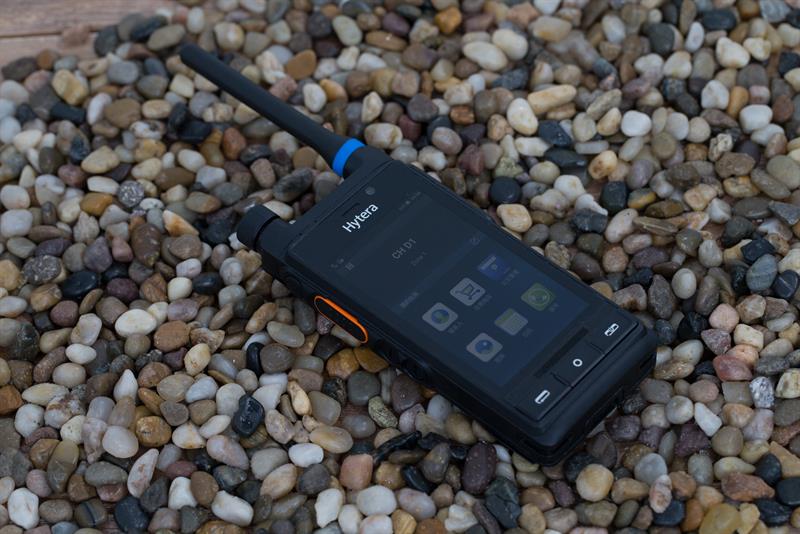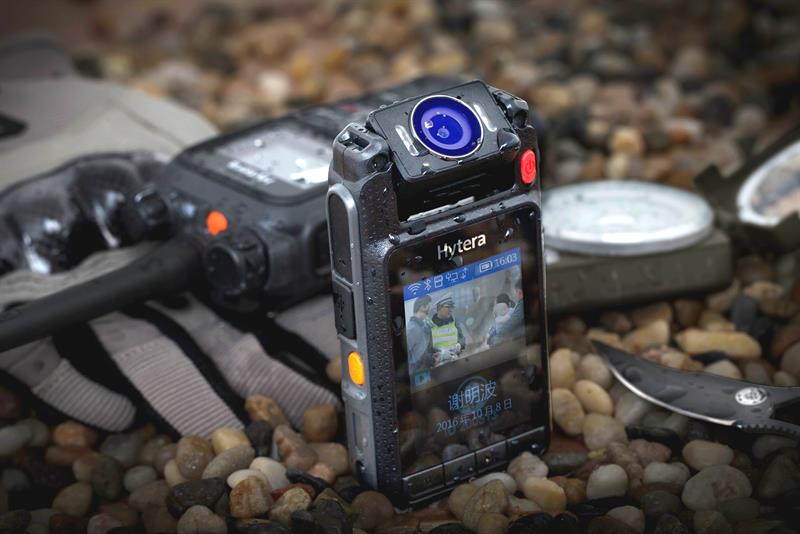Each technology has its advantages and disadvantages. Put crudely, PMR is best for voice applications, including group and emergency calls, and 4G LTE for fast data services. If the two are interconnected to form a converged network then end users can enjoy the best of both worlds.
A major advantage of private PMR networks is that they can be designed with exactly the coverage and capacity the customer requires. 4G LTE systems operated by mobile network operators (MNOs) are ‘best effort’ in that coverage and capacity are dictated by commercial considerations.
Modern digital IP-based PMR networks can not only provide utilities, airports, ports, logistics companies and many other industries with a resilient voice network, but they can also be used to transmit low bandwidth data, such as supervisory control and data acquisition (SCADA) as well.
For higher data rate applications businesses can use an MNO’s ‘best effort’ 4G LTE commercial network.
However, if the MNO’s coverage is not adequate at, for example, a remotely situated power station, then the utility could install a private 4G LTE base station, plus LTE core, to boost local coverage.
This has become possible in recent years thanks to compact cell 4G LTE base stations, from Hytera for example. These can be deployed as fixed or mobile units in conjunction with an MNO.
The great benefits of convergence
By converging the two types of radio network, a device can transmit vital low bandwidth machine-to-machine (M2M) over its IP-based PMR network or IoT-data over the 4G LTE commercial network. For example, a power utility company might use the network to automate parts of its power distribution system to enable real-time adjustments to changing loads, production rates, as well as technical supervision.
But gaining access to the world of fast broadband data is a major plus, as end users can send and receive images and video in the field and interrogate databases, which improves efficiency and productivity. Video can also be streamed automatically from remote or sensitive sites in the case of unauthorised entry or detection of faults.
Voice will continue to remain important, however. Voice applications in DMR and TETRA systems have evolved to provide a wide range of functionality not found in cellular networks. Due to the one-to-one calling protocols in cellular networks, the one-to-many and direct one-to-one mode (bypassing the network) communication features in PMR systems are missing in LTE. It should be noted, however, that these kinds of PMR features are currently being written into the LTE standard.
Taking the example of a power utility company again, a PMR system provides a resilient voice network to direct its field staff. The PMR system ensures that the user organisation does not have to rely on the limitations of mobile phone networks, especially in an emergency situation. It also allows managers and other staff who do not have a radio to communicate with staff equipped with PMR terminals via their mobile devices.
Hytera’s new Multi-mode Advanced Radio, the PDC760 (DMR) or PTC760 (TETRA) combines PMR with LTE, offering dual display and a rugged touch screen to manage narrowband and broadband communications. Converging on one device means staff do not have to carry two separate handsets to access the best in voice and data technology.
Why an LTE-only solution for mission critical comms might not be advisable just yet
Work on introducing mission critical features into the LTE by standards specification body 3GPP is still on-going. Not all PMR features have been specified to the same depth for LTE, but mission critical push-to-talk (MCPTT) voice features are among the more advanced specifications.
Others features like Proximity Services (ProSe – LTE’s equivalent to TETRA’s Direct Mode Operation), IOPS (Isolated Operation), and data services, such as video PTT and group video broadcasting, are still under development.
Some vendors are providing proprietary ways to support these features, but then customers run the risk of vendor lock-in unless the solutions can be easily adapted to meet the standard once it is agreed at a later date.
Mission critical LTE is at a very immature stage of development. Customers may therefore wish to wait until the industry development cycle matures.
A key point is that interoperability between vendor solutions at the service level is not guaranteed yet by any open process similar to the IOPS (TCCA) process used for TETRA products. Customers wishing to purchase products from multiple vendors will want to be sure they can all work together.
The problem with spectrum
Lack of spectrum for any kind of private LTE users is another major issue. Very few countries have allocated spectrum for private users yet. Even if they have or plan to do so, not all private users will be granted access to the spectrum.
Some countries may not allocate any LTE spectrum for private use, which means private users must turn to the licensed spectrum holders – usually commercial mobile operators – a solution that will not suit all customers.
Another consideration is the cost of deployment associated with an LTE-only mission critical network. Whereas TETRA and DMR are deployed mainly using lower bands (VHF and 380-450 MHz), allocated bands for private LTE are higher (700MHz, 800MHz, 1.4GHz, 2.3/2.6 GHz), so the number of sites/towers, OPEX costs, etc., are generally more expensive for LTE networks.
Thus, a model with 100 per cent coverage in TETRA/DMR, and bubbles of LTE coverage where required seems to make the most sense, especially for large deployments.
Converged communication networks enable organisations to benefit from both technologies – retaining the field-proven resilient voice technology of DMR and TETRA, while accessing new fast 4G LTE broadband technology, which is becoming a necessity in an increasingly data-driven world.

PTC760 – The Bridge between TETRA and Broadband
Hytera’s revolutionary LTE/TETRA hybrid radio – the PTC760 – is the first of its kind to provide a truly convergent platform for the transmission of critical voice communications and LTE broadband data services. It interconnects the two technologies to form a converged solution to allow users to enjoy the best of both worlds: PMR is best to deliver voice applications, including group and emergency calls, and 4G LTE provides fast data services to support a multitude of applications
Whether it‘s machine-to-machine (M2M) or Internet of Things (IoT) data sharing of images and streaming video from the field, or even interrogating databases and roaming between sites, the Hytera multi-mode handset offers advanced functionality and flexible communications. Converging on one device means staff does not have to carry two separate handsets to access the best in voice and data technology.
Typical LTE Multi-mode functions:
• Data Acquisition – Detect the surrounding environment, provide alerts and acquire data in real time, communicating continuously with back-end systems for informed decision making.
• Secure Supervision – Maximise the encryption services and control system to push secure data for evidence capture and critical information sharing.
• Flexible Applications – Applications and third-party APIs can provide flexible tools and gateways to make the most of the LTE data services.
• Seamless Communications – Seamlessly switching between networks, use public or private LTE networks to allow additional communication flexibility outside of your PMR network.
• Wireless Support – Conduct batch programming, upgrades, permission control and data backup over LTE with the Hytera Smart MDM software.
• Versatile Voice Calls – Make the right call – use public or private LTE networks for voice communications.
Further information about Hytera’s newest products and solutions can be found on www.hytera-mobilfunk.com.

Why bodycams are a useful piece of technology
The use of body-worn video cameras is on the rise, for many reasons. Hytera’s VM685 bodycam doubles as a remote speaker microphone, so users don’t need to carry an extra device
Front line staff are increasingly being issued with body-worn video cameras (bodycams) to capture a secure point-of-view record of what happened during an incident. The video and audio recording can then be used as evidence if the material is correctly handled and stored.
Bodycams can help to deter verbal abuse and aggression, as people often calm down if they know they are being filmed. As such they provide an additional means of protection for front line staff and lone workers. The recorded evidence can also be used to refute false allegations made against staff in many walks of life.
Fire, ambulance, and police officers are now deploying bodycams. They are also being given to prison service staff, private security officers, healthcare workers, railway workers, traffic wardens, parking attendants, and other lone workers, who sometimes face abuse and the threat of violence in their jobs. Bodycam footage can also be used for wider purposes such as training. Footage can be used to demonstrate best practice, provide feedback on an incident, to observe the interaction between staff members, and between them and the public, and to show new recruits the kinds of incidents that can take place.
Before issuing staff with bodycams it is important to ensure use policies are put in place. In many countries the use of bodycams will come under CCTV surveillance and data protection legislation.
VM685 bodycam
If you have invested in a Hytera radio system, or are thinking of doing so, it makes sense to consider the new VM685 bodycam. The VM685 is a remote speaker microphone that doubles up as a video bodycam for capturing, storing and analysing evidence from the field. The innovative in-built remote speaker microphone allows users to communicate efficiently from the push-to-talk on their VM685, routed via their Hytera radio, even initiating an emergency alarm, connected to the radio via cable or Bluetooth. The VM685 can also deliver real-time video streaming when paired with the Hytera PDC760 Multi-mode Advanced Radio, which can support 4G LTE broadband. Alternatively, the VM685 can be used as a stand-alone bodycam device.
Boasting a 180° rotatable and 140° wide-angle lens, 16-megapixel image sensor and supporting 1080p with up to 60FPS (frames per second), the VM685 generates high-quality video or images, even in low-light conditions with its six infrared LEDs. The bodycam features one-touch operation for video capture, voice recording and emergency call, with a pre-recording feature which can be set to pre-roll and capture the footage shot prior to when the record button is pressed.
Secure and reliable data transfer is enabled when the device is docked in the 6-bay charger, connecting with the Hytera MDM (mobile device manager) client which automatically extracts the media, clears the device and stores the data in the secure evidence viewer with tags and time logs. The MDM is also supported by the RVM manager software which can program the devices to the correct user parameters, alias and ID. The VM685 weighs less than 170g when clipped onto a person using the multi-way attachment provided as standard. It is IP67 dust and waterproof rated for secure outdoor use and supports Bluetooth 4.0 for wireless connectivity for audio and BLE support. Additional connectivity is available via Wi-Fi to push information and support programming.



